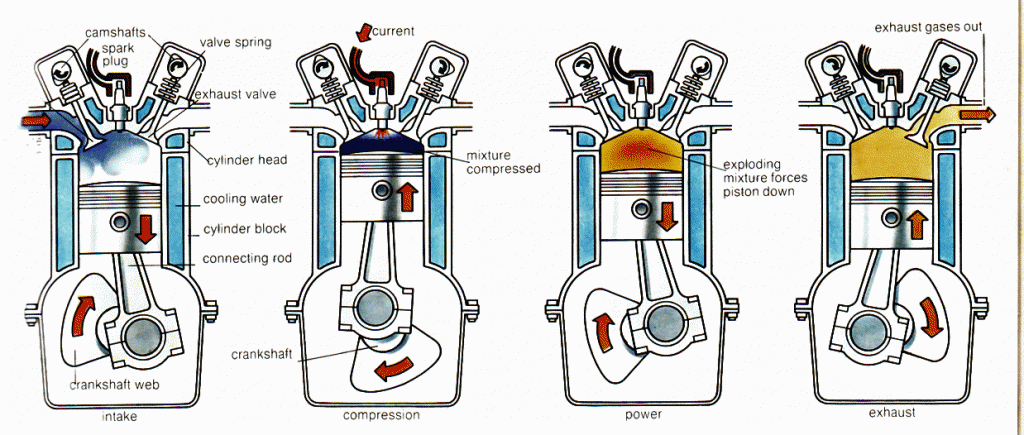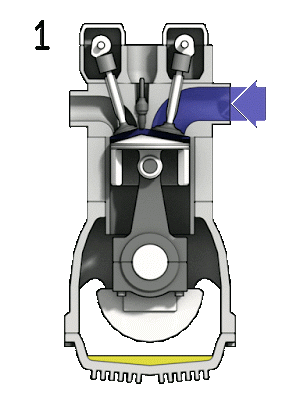-
An internal combustion engine needs to combust air and fuel to produce mechanical power.
-
The air/fuel mixture needs to be inducted, compressed, combusted and extracted.
-
Here’s the basics on how a four-stroke engine works.
Recently while testing the Triumph Street Triple RS, I had someone ask me if the bike was a three-stroke. There was another occasion when I had a small argument with another person who insisted that the KTM 1290 Super Duke GT was a two-stroke. I wouldn’t give a second thought if those guys were motorcycle neophytes, but they were riders, and it happened many times over many years. What happens if it’s a BMW K 1600 or Honda Gold Wing? Do they have six-stroke engines?
It seemed like this phenomenon has been rampant for the last twenty years in our country. OMG.
There are two common types of power cycles for gasoline engines: Four-stroke and two-stroke. Let’s see how a four-stroke works. There’s also the rotary engine and Atkinson cycle engine, but they’re uncommon.
First and foremost, an internal combustion engine needs to combust fuel and air. The force from this combustion is transferred to mechanical energy. Hence, a four-stroke engine takes four distinct strokes to produce the power to move a vehicle.
Let’s take a look at the basics.
1: INTAKE
Also called suction, this stroke begins with the piston at top dead centre (TDC), as it travels downwards toward bottom dead centre (BDC). The intake valve opens and the piston travelling downwards causes a negative pressure (vacuum) in the cylinder, sucking in the fuel/air mixture and filling the cylinder.
2: COMPRESSION
As the piston travels back up from BDC to TDC, the intake valve closes and traps the fuel/air mixture inside the cylinder. The piston compresses the mixture in preparation for combustion.
The crankshaft will have travelled 1 full, 360o revolution (1 RPM) when the piston reaches TDC.
3: COMBUSTION
Also known as ignition or power stroke. The sparkplug (or sparkplugs) fire, igniting the compressed fuel/air mixture. The pressure raises by 3200 to 5000 kPa (32 to 50 bars), and the temperature by 600o Celcius.
The compression pressure forces the piston back downwards to BDC, creating the mechanical work (kinetic energy) to turn the crankshaft.
4: EXHAUST
Also known as outlet stroke. The exhaust opens as the upward movement of the piston pushes the burned gasses out past the exhaust valve, into the exhaust port and exhaust pipe.
The crankshaft completes two full revolutions when the piston fully reaches TDC. A four-stroke engine needs two RPM to produce mechanical power. Thus if you hold 10,000 RPM for one minute on the tachometer, there are 5000 power strokes in that one minute. Yes, that’s how hard the engine is actually working.
As we mentioned above, this are the basics of how a four-stroke engine works. There are other little details that we will discuss in the future, such as ignition timing which actually emits the spark before the piston fully reaches TDC, so forth.
Back to the opening story, no, there is no three-stroke or six-stroke engine. The answer I commonly use is, “It’s a one/two/three/four/six piston, four-stroke engine.” Or just show them this article.




















